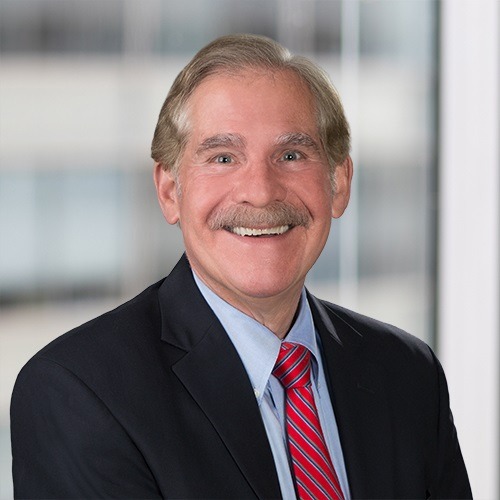Medical directors: Key to quality care
All nursing home caregivers are responsible for ensuring that residents receive quality care, but nobody bears a greater ultimate responsibility than the medical director, whose role is central to quality care.
Because hospitals discharge patients “sicker and quicker,” skilled nursing facilities (SNFs) must provide care to residents with medically complex conditions. Competent, committed healthcare practitioners are required to meet the challenges such residents present, and the role of the medical director in this process cannot be overemphasized.
DEFINING THE ROLE
The Medicare conditions of participation prescribe the role of a nursing home’s medical director. The applicable federal regulation states: “The medical director is responsible for–(i) implementation of resident care policies; and (ii) the coordination of medical care in the facility.”
Although the regulation has existed for more than 30 years, little guidance was available until June 9, 2005, when the Centers for Medicare & Medicaid Services (CMS) published advance guidance (PDF) regarding the medical director “tag” (F-tag 501). The guidance became effective on Nov. 18, 2005, and provides a road map for surveyors considering whether to cite a facility with a deficiency related to its medical director.1
Significantly, the “guidance” issued by CMS did not impose any new obligations on medical directors. Rather, the revised guidance articulates and clarifies the essential responsibilities of a medical director.
CERTIFICATION IMPORTANT
Although federal regulations require that a medical director be a licensed physician, no requirement exists that he or she be “certified.” Compelling reasons for medical director certification exist, however.
Nationally accepted standards regarding a medical director’s role and responsibilities have been promulgated by AMDA–The Society for Post-Acute and Long-Term Care Medicine, one time known as the American Medical Directors Association (AMDA). Under the auspices of the American Medical Directors Certification Program (AMDCP), medical directors who meet the educational requirements and successfully demonstrate competence in clinical medicine are eligible to receive the certified medical director in long term care (CMD) designation.
Since the program began in 1991, AMDA has certified more than 3,000 medical directors. The certification is valid for six years, and recertification is required beyond the initial six-year period.
A recent study illustrates the benefits of CMDs. The study examined the relationship of CMDs to quality of care in nursing homes. Based on an analysis of 547 SNFs with CMDs, the researchers concluded that the presence of a CMD improves quality by approximately 15 percent.
“The presence of [CMDs] is an independent predictor of quality in U.S. nursing homes,” the study concluded.2
Medical directors have a direct and substantial effect on quality care in the opinion of at least one owner/operator.
“Having a full-time medical director at our facilities significantly improves quality care in a myriad of ways, including increased customer satisfaction due to their accessibility for questions by residents and families, continuous monitoring of facility operations/policies/procedures to identify areas for clinical improvements, and constant oversight of the numerous attending physicians, consultants and other ancillary health providers within the facility,” says Matthew Neiswanger, LNHA, MSW, an owner/operator of SNFs.3
QUALITY OF CARE
Medical directors should ensure that a facility’s policies and procedures incorporate current standards of practice, to meet the needs of residents. Although medical directors are not required to sign facility policies and procedures, they should have input into their development, review and approval. Likewise, although a designated physician must be a member of the facility’s quality assessment and assurance committee, the regulations do not require that this physician be the medical director. Involving the medical director in all aspects of quality assurance, however, can pay huge dividends and is consistent with their role.
“Medical directors should regularly review facility quality measures and assist in the quality assurance process,” says Charles Crecelius, MD, PhD, CMD, a multifacility medical director and former president of AMDA. “The medical director should be a key player in determining how the facility will meet clinical components of the final directives for [quality assurance and performance improvement] to be issued soon by CMS.”4
LESSONS LEARNED
A recent case illustrates how CMS and an administrative law judge (ALJ) view the role of the medical director. CMS imposed a $147,350 civil penalty at a facility after surveyors determined five deficiencies that constituted immediate jeopardy. Among those deficiencies was F501, regarding the facility’s medical director. CMS alleged that the medical director failed to ensure implementation of a prescreening admission policy and that the failure allowed the admission of residents for whom the staff could not provide care. CMS also alleged that the medical director failed to ensure that the facility’s staff was properly trained.
The facility appealed, and an expert medical witness for CMS testified that the medical director failed to comply with the standard of practice for a nursing facility's medical director. CMS’ expert testified that “a nursing home's medical director is responsible for, among other things, leading the development and implementation of a facility's clinical policies and procedures; being part of a staff team that reviews plans of care for residents to ensure the residents who have unique or challenging needs are cared for properly; and making sure the staff are properly trained.”5
The facility's administrator testified that its medical director was a part-time independent contractor who was paid only $650 a month. The ALJ noted that although the regulations do not establish the number of hours a medical director must work, they do “specify what is expected of the medical director.”
The ALJ further held: “A preponderance of the evidence, however, shows that [the nursing facility] did not have a medical director who assured the facility had developed and implemented appropriate policies and procedures against mistreatment, neglect and abuse. The regulations contemplate more involvement for a facility's medical director than simply attending monthly [quality assurance] meetings.”
As this case illustrates, it may be appropriate to retain a CMD as a consultant, to help a facility’s medical director.
Daniel Haimowitz, MD, CMD, is a medical director of nursing facilities in Pennsylvania and a member of the AMDA Board of Directors. Because of his clinical expertise as well as his teaching abilities, he has provided medical education to medical directors, attending physicians and advance practice nurses in facilities other than the ones in which he works.
“Because of the high acuity and multiple conditions of comorbidity of so many residents, it is incumbent on medical directors to not only be clinically astute, but to also help develop, review and be accountable for the development and implementation of policies and procedures covering all aspects of a resident’s care and needs,” he says. “Additionally, it is up to us as medical directors to see that all attending physicians are practicing in accord with current standards of practice.”6
The healthcare industry is highly regulated in general, and the nursing home sector is more regulated than any other area of healthcare. The regulatory environment, coupled with the increasingly medically complex resident population, requires highly skilled medical directors who have both clinical competencies and leadership abilities. A unique set of skills, knowledge, experience and attitudes is required to be an effective medical director.
Excellent leaders do not necessarily make excellent clinicians, and excellent clinicians do not necessarily make excellent leaders. Being an effective medical director requires skills in both domains, however.
RECOMMENDATIONS
As noted above, a positive correlation exists between skilled medical directors and desired outcomes for residents. Facilities, therefore, should do whatever is necessary to attract, maintain and support qualified medical directors.
Because the medical director is an important key to quality care:
- Consider having a medical director who is a CMD.
- Encourage medical directors to attain and maintain the CMD designation.
- Encourage medical directors (and attending physicians) to become members of AMDA.
- Maintain a facility library with copies of AMDA’s clinical practice guidelines and other evidence-based resource materials for the medical director, attending physicians and all clinical staff.
- Ensure that the medical staff, administrator and director of nursing are familiar with the role and responsibilities of the medical director as articulated by CMS in Appendix PP of the State Operations Manual (SOM), Guidance to Surveyors for Long Term Care Facilities, regarding F-tag 501.7
- Provide adequate resources and support for the medical director.
- Understand that the medical director wears multiple hats, from expert clinician to inspiring leader.
- Appreciate the fact that the medical director and facility have a partnership in promoting optimal resident outcomes and should collaborate as much as possible.
References:
- Advance Issuance of Revised Interpretative Guidelines for Tag F501, Medical Director, S & C-05-29. Available at: https://www.cms.gov/Medicare/Provider-Enrollment-and-Certification/SurveyCertificationGenInfo/downloads/SCLetter05-29.pdf. Accessed on March 10, 2014.
- Rowland FN, Cowles M, Dickstein C, Katz PR. Impact of medical director certification on nursing home quality of care. J Am Med Dir Assoc. 2009;10:431-435.
- Email from Matthew Neiswanger, LNHA, MSW, Ed. D., abd., (CEO/owner, Neiswanger Management Services) to Alan C. Horowitz (March 11, 2014) (on file with the author).
- Email from Charles Crecelius, MD, PhD, CMD (medical director, past president, AMDA) to Alan C. Horowitz (March 10, 2014) (on file with the author).
- Mountain View Manor v. CMS, CR1076 (2003), aff’d, DAB No. 1913 (2004). Available at: https://www.hhs.gov/dab/decisions/CR1076.html. Accessed on March 11, 2014.
- Email from Daniel Haimowitz, MD, CMD (medical director, board of directors, AMDA) to Alan C. Horowitz (March 11, 2014) (on file with the author).
- State Operations Manual, Appendix PP – Guidance to Surveyors for Long Term Care Facilities. See 42 C.F.R. § 483.75(ii), F501. Available at: https://www.cms.gov/Regulations-and-Guidance/Guidance/Manuals/downloads/som107ap_pp_guidelines_ltcf.pdf. Accessed on March 10, 2014.

Alan C. Horowitz, Esq., is a partner at Arnall Golden Gregory LLP, where he focuses his legal practice on regulatory compliance for skilled nursing homes, hospices and home health agencies and manages cases where the Centers for Medicare and Medicaid Services (CMS) has imposed an enforcement action. He is a former assistant regional counsel Office of the General Counsel, U.S. Department of Health and Human Services. As counsel to CMS, he was involved with hundreds of enforcement actions and successfully handled appeals before administrative law judges, the HHS Departmental Appeal Board and in federal court. He also has clinical healthcare experience as a registered respiratory therapist and registered nurse. He can be reached at alan.horowitz@agg.com.
Related Articles
Topics: Alan C. Horowitz , Executive Leadership , Risk Management , Staffing










